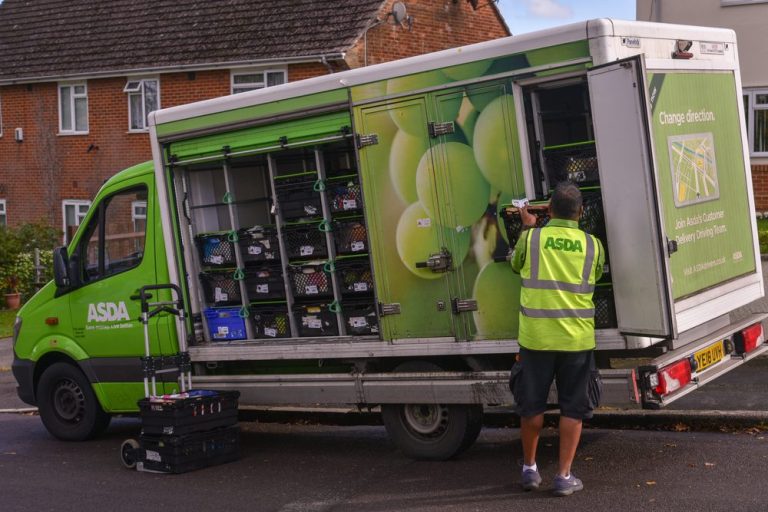
As grocers look to lay solid foundations for their digital futures, Asda is dropping Walmart.
The United Kingdom-based supermarket chain announced Thursday (Feb. 16) that it is partnering with digital consulting company Publicis Sapient to create an eGrocery business that will allow the grocer to transition away from relying on its former owner Walmart (which sold off Asda back in 2020) to fulfill online sales.
“[This] work is singularly focused on enabling Asda to be independent of Walmart and enabling the retailer to evolve and grow, focusing on exceptional usability and customer experience,” Julian Skelly, senior managing partner at Publicis Sapient, said in a statement.
The transition will take some time, with the new platform launching by April of next year. The British grocer did not expand on its motivations for seeking independence from the mega-retailer. That said, though Walmart may not have its own stores in the United Kingdom, it is not hard to imagine why Asda would want to escape reliance on what is effectively now a competitor.
Indeed, many grocers have been looking to build out their own eCommerce platforms for years to stop depending on third parties for their digital sales. Direct channels, after all, offer retailers control over the experience and the ability to collect direct data from shoppers so as to market to them more effectively.
“We look forward to a successful partnership and to the delivery of a platform that will enable a seamless transition for our customers, moving from a legacy system run by Walmart to an entirely independent Asda-owned platform,” said Carl Dawson, vice president, chief digital and technology officer at Asda.
Indeed, Asda is not the only grocer looking to escape reliance on others in their eCommerce channels right now, and it is not just major chains that are making the change. For instance, on Wednesday (Feb. 15), independent grocer Heinen’s, which has 23 locations across Ohio and Illinois, announced that it is switching to fulfilling delivery and pickup orders in-house, pulling its stores from Instacart’s marketplace next Wednesday (Feb. 22).
The news suggests that direct fulfillment is no longer the exclusive purview of industry giants. Even smaller players are finding ways to retain the entirety of the sale, own the transaction and collect customer data.
Research from PYMNTS’ study “Changes in Grocery Shopping Habits and Perception,” which drew from a December survey of more than 2,400 U.S. consumers, found that 45% shop for groceries online at least some of the time. However, only 7% of grocery shoppers do so all the time, while a far greater 54% shop in stores all the time. Yet, the share of consumers shopping digitally is on the rise. That 7% figure marks a 36-fold increase from pre-pandemic.
Additionally, grocers must focus on their digital channels to prepare to meet the needs of shoppers in the future, given that younger consumers are significantly more likely to purchase online than their older counterparts. Fifty-nine percent of Gen Z consumers and 64% of millennials reported purchasing groceries via eCommerce channels at least some of the time, while only 28% of baby boomers and seniors said the same.